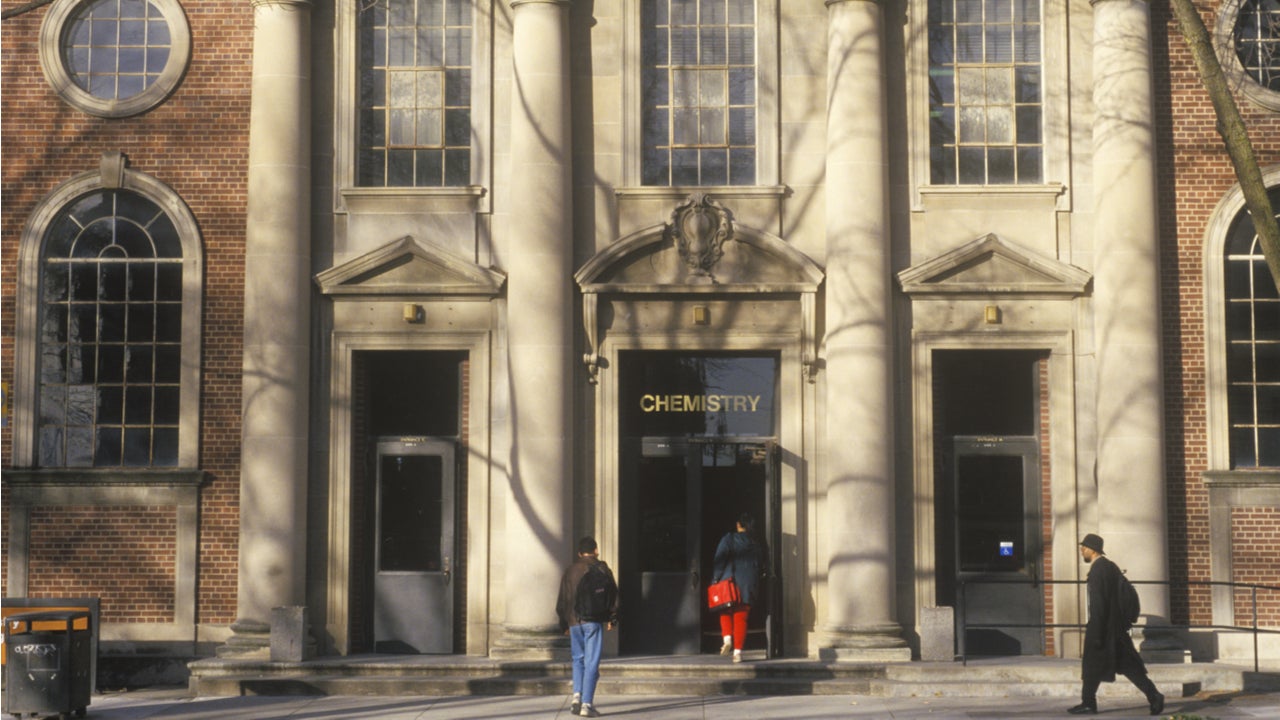Student loan forgiveness for teachers: What you need to know

Teaching can be a rewarding profession, but teachers are often overworked and underpaid. With the average borrower owing almost $40,000 in student loans, it’s easy to see how educators may struggle with repaying student debt. Thankfully, teachers have many options when it comes to student loan forgiveness.
What is student loan forgiveness for teachers?
Student loan forgiveness — also called cancelation or discharge — is a program where the federal, state or local government (or another organization) wipes out either all or part of your student loan balances.
One perk of teaching is that you may access multiple student loan forgiveness programs. Eligibility requirements vary, but some programs will forgive your debt after just a few years of service in teaching.
What are eligibility requirements for teacher student loan forgiveness?
Each student loan forgiveness program for teachers has different eligibility requirements. For example, some forgiveness programs are only available if you work at an eligible public school or teach a specific subject. Other forgiveness options may be more lenient in this area.
One common requirement, especially for federal forgiveness programs, is that your student loans can’t be in default. The potential to lose out on student loan forgiveness benefits is just one more reason why keeping up with your repayment schedule is so important.
Types of loan forgiveness programs
Below are three student loan forgiveness options for teachers that could potentially save you a bundle.
Teacher Loan Forgiveness
Eligible teachers may be able to eliminate up to $17,500 of their federal student debt through the Teacher Loan Forgiveness program. The program works for Direct or FFEL Loans (subsidized or unsubsidized) and may be available once you serve as a full-time teacher for five or more years.
Requirements: You must work full time at an eligible low-income school or educational service agency. Your full-time employment must include at least five completed and consecutive academic years. At least one of those years needs to be after the 1997-98 school year.
Perks: Qualifying for the Teacher Loan Forgiveness program does not prevent you from receiving additional benefits through the Public Service Loan Forgiveness program.
What to watch out for: You need to be a “highly qualified teacher” in mathematics, science or special education to qualify for the full $17,500 in forgiveness. The Department of Education defines this distinction as teachers:
- With at least a bachelor’s degree
- With full state certification as a teacher
- Who have not had certifications or licensure requirements waived on an emergency, temporary, or provisional basis
Other teachers may qualify for loan forgiveness of up to $5,000.
How to apply: After completing the required years of instruction, you must fill out the Teacher Loan Forgiveness Application. This paperwork will include a sign-off from a school administrator, confirming your eligible employment. Once completed, you will submit this form to your current loan servicer.
Public Service Loan Forgiveness
You may also be eligible for the Public Service Loan Forgiveness program if you work as a full-time teacher. This program can potentially wipe out up to 100 percent of your remaining federal student loan debt (Direct Loans or Direct Consolidation Loans) after you work for a qualifying government or nonprofit organization for at least 10 years.
Requirements: You need to work full time for the government (federal, state, local or tribal) or a nonprofit organization for at least 10 years. During that time, you’ll also need to sign up for an income-driven repayment plan and make 120 qualifying, on-time student loan payments. A limited PSLF waiver loosens some of these requirements for those who apply during a specific window of time, ending on October 31, 2022.
Perks: Public and private (nonprofit) school teachers may be eligible for the program.
What to watch out for: PSLF doesn’t work for private student loans, nor for all federal student loans. If your federal student loans aren’t eligible, you’ll need to consolidate your accounts into a Direct Loan to qualify.
How to apply: Complete the PSLF eligibility paperwork and have your employer(s) sign off to confirm your dates of employment. Then submit completed forms to your current loan servicer. If you are applying under the limited waiver (sometimes referred to as Temporary Public Service Loan Forgiveness), make sure to apply before the Oct. 31 deadline.
Perkins Loan Teacher Cancellation
Through 2017, Perkins Loans were available to certain undergraduate and graduate students with financial need. You can no longer receive these student loans, but if you’re a teacher with existing Perkins Loans, they might be eligible for up to 100 percent cancellation over a five-year period.
For detailed eligibility information, you can visit the U.S. Department of Education’s page on the topic.
Requirements: You must have a Perkins Loan and be a full-time teacher at a qualifying low-income school. You may still be eligible for the cancellation if you teach science, mathematics, a foreign language, bilingual education or special education. In certain states with teacher shortages, you may qualify if you teach a different subject as well.
Perks: Teachers at nonprofit private schools may qualify for forgiveness, depending on whether the school provides a qualifying education as defined by state law. Pre-kindergarten and kindergarten instruction may also make a teacher eligible for this type of forgiveness if included in a state’s curriculum.
What to watch out for: If you’re eligible, your loans won’t be canceled all at once. Instead, 15 percent of your student loan balances will be canceled per year during the first and second years you hold an eligible teaching position. Another 20 percent of your balances will be canceled per year during years three and four. Finally, 30 percent will be canceled after your fifth year of eligible employment.
How to apply: An application for this kind of cancellation or discharge must be completed through the school to which your loans were originally disbursed, or through that school’s Perkins Loan servicer. Contact your college or university for the proper paperwork and specific instructions.
Can you combine loan forgiveness programs?
Depending on the subject area and school in which you teach, you may be eligible to combine forgiveness programs. However, you can’t make payments to qualify for more than one program at once.
For instance, you may maximize the TLF program after five years of service. If you still have a loan balance after TLF is applied, you may continue working for another 10 years to be eligible for the PSLF program for the remainder of your balance. It is possible to use both programs to your benefit.
If you’re applying for loan forgiveness at the local or state level, review the requirements to make sure that cancellation doesn’t interfere with other forgiveness plans.
States with teaching loan forgiveness
Aside from the federal student loan forgiveness programs above, you should take time to search for available teacher benefits in your state and local area. In some cases, you may even be able to combine multiple teacher student loan forgiveness programs and amplify your savings potential.
Some states will forgive offer specific student loan forgiveness to teachers who are willing to move for work. Some programs include, but aren’t limited to:
- Teacher Mortgage Assistance Program (Connecticut)
- The Illinois Teachers and Child Care Providers Loan Repayment Program
- Oklahoma Teacher Shortage Employment Incentive Program
- Virginia Teaching Scholarship Program
- Educators for Maine Program
- Missouri Minority Teaching Scholarship
- Arkansas State Teacher Education Program (STEP)
Make sure you qualify for the program and that you submit the necessary paperwork by the deadline. Some programs are offered on a rolling basis, while others have a deadline by which you must submit an application.
Next steps
Forgiveness programs are a great incentive for professionals considering teaching as a profession. Before choosing your specialty area or selecting an employer, educate yourself about the cancellation programs available.
If you can’t afford to keep up with your regular repayment schedule at this time and don’t qualify for existing teacher loan forgiveness programs, you can talk to your student loan servicer about forbearance or deferment options. Income-driven repayment plans may also be worth considering, depending on your financial situation and the size of your household.
Learn more:
You may also like

What happens if you never pay your student loans?

Student loan terms to know before applying for a loan




